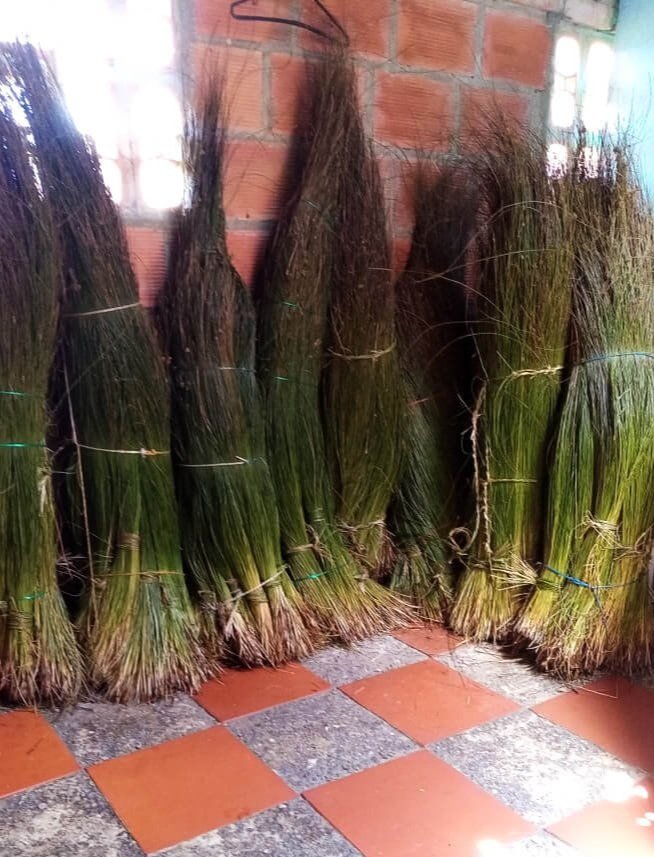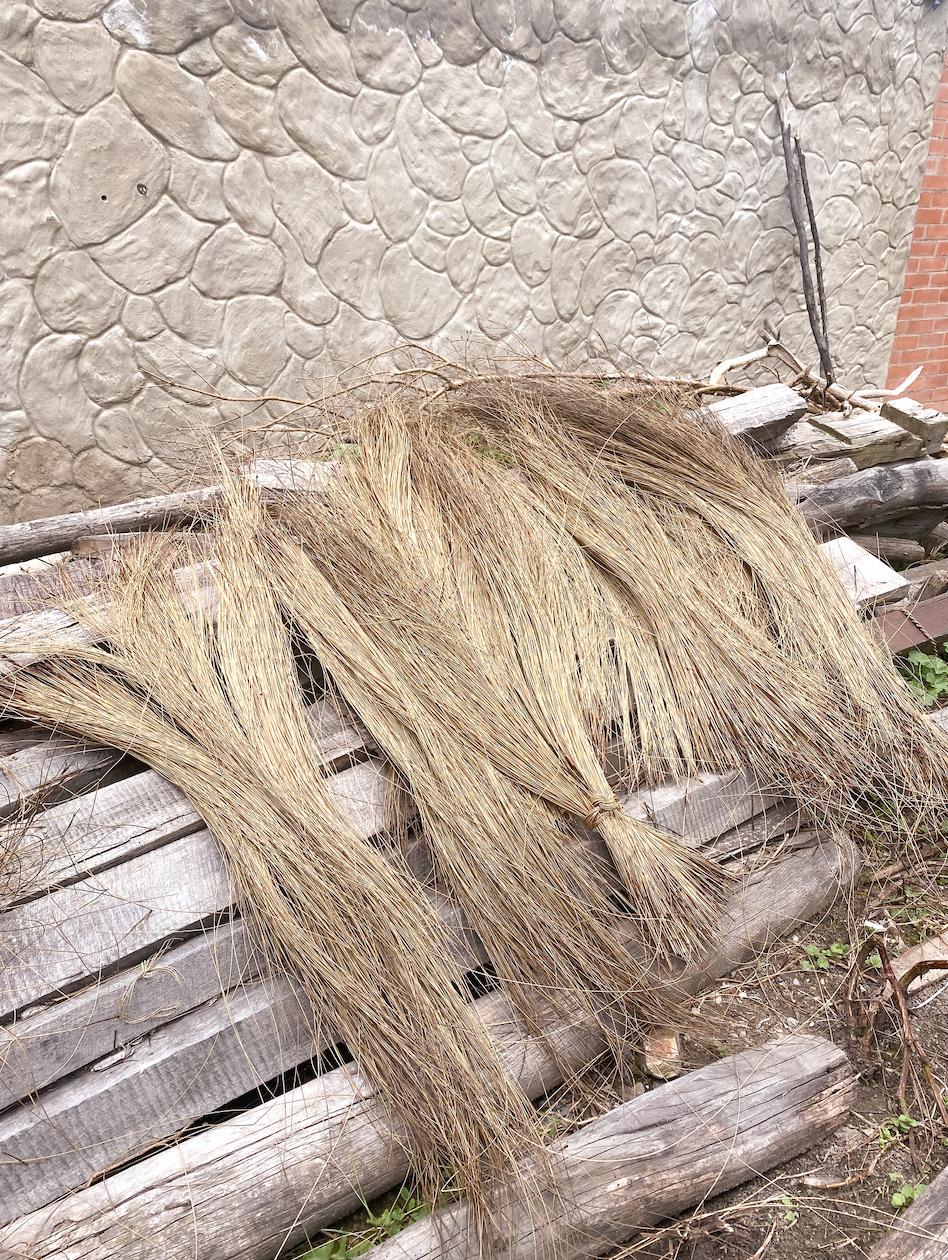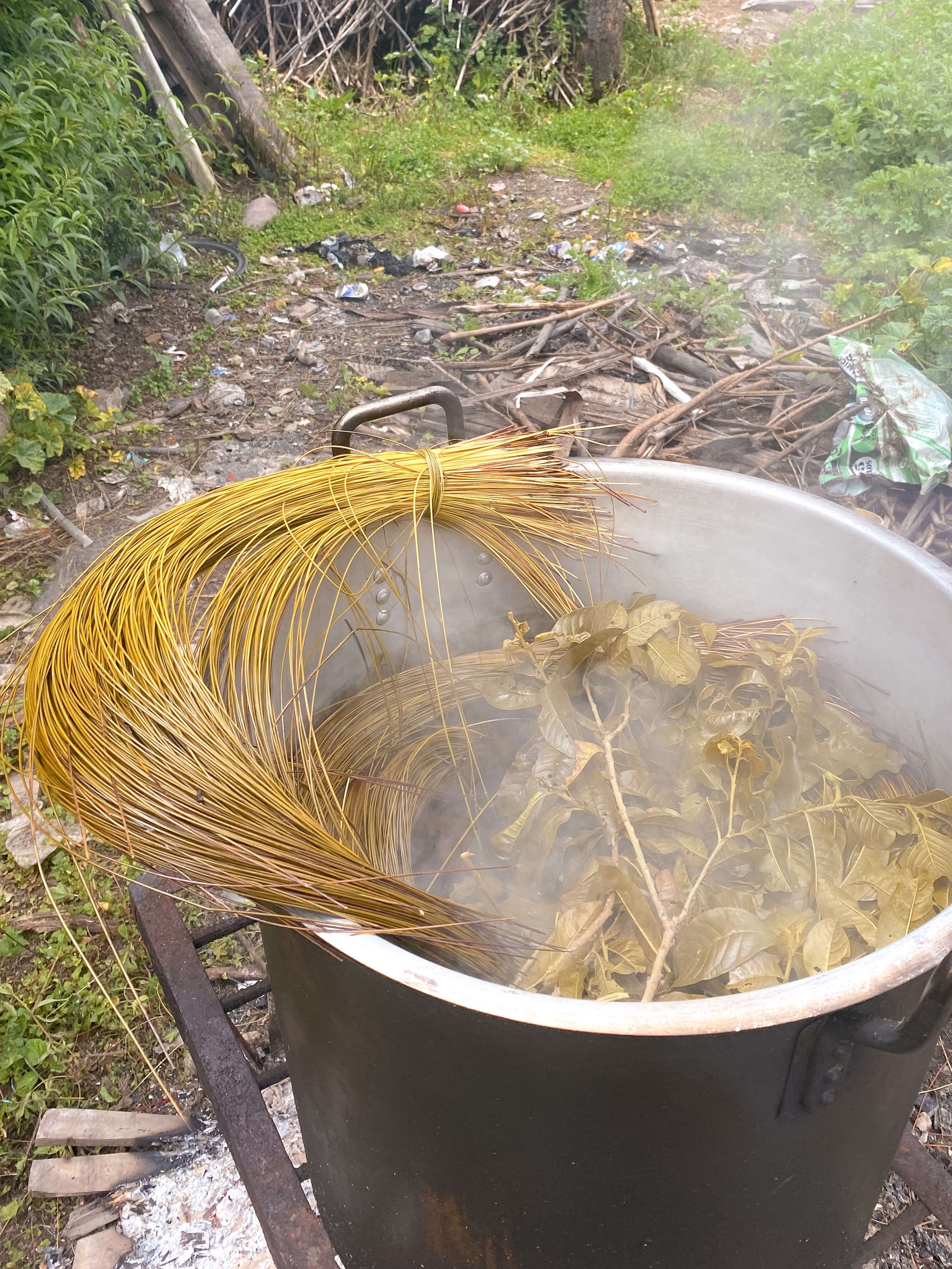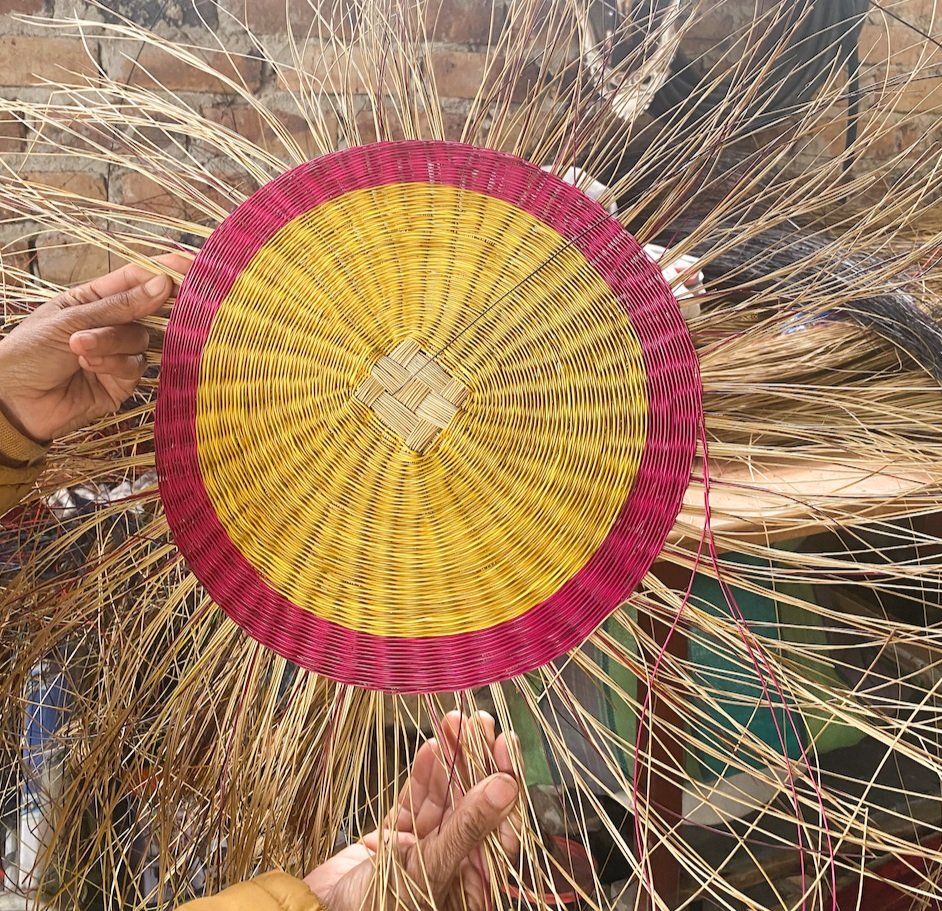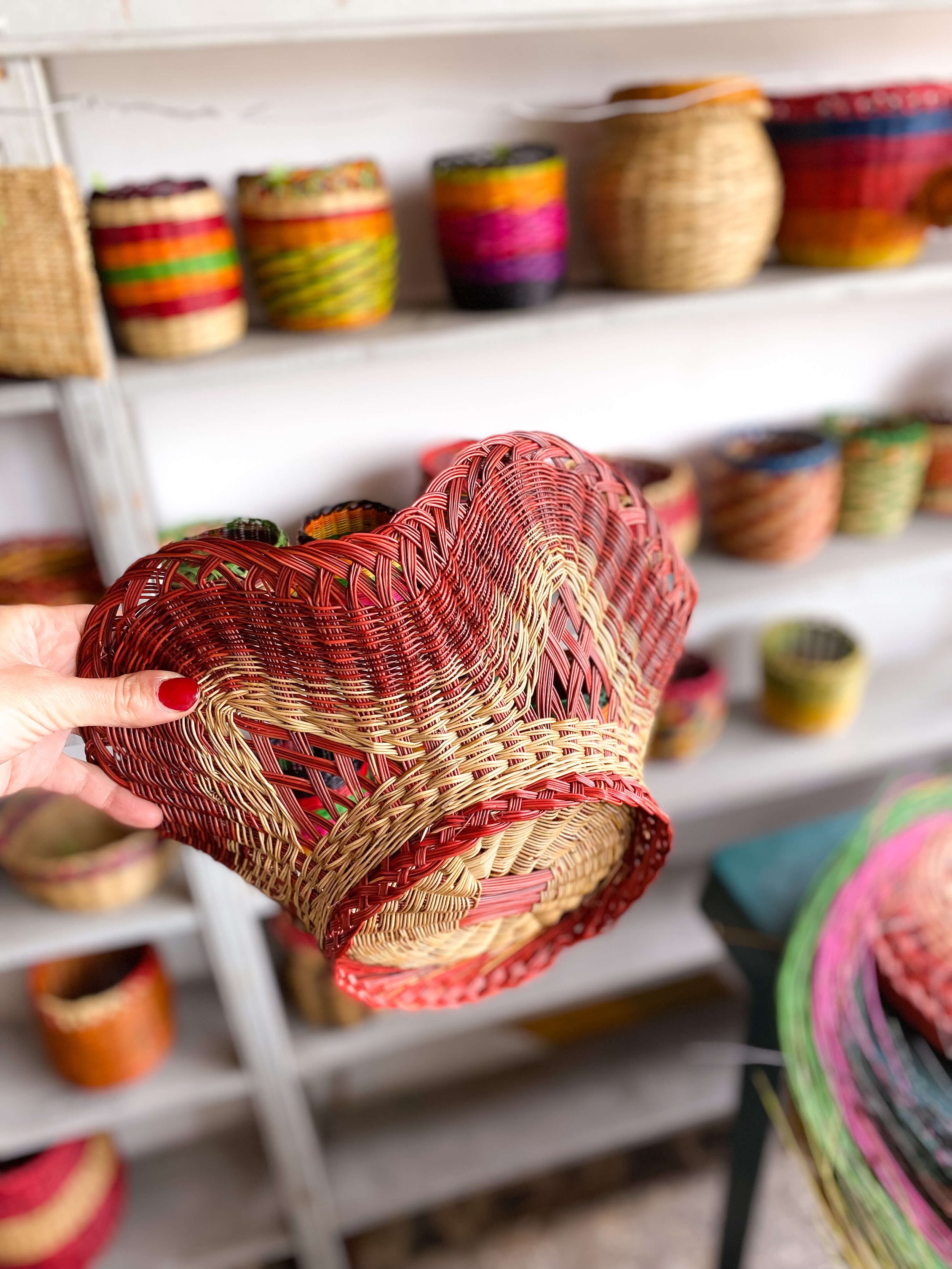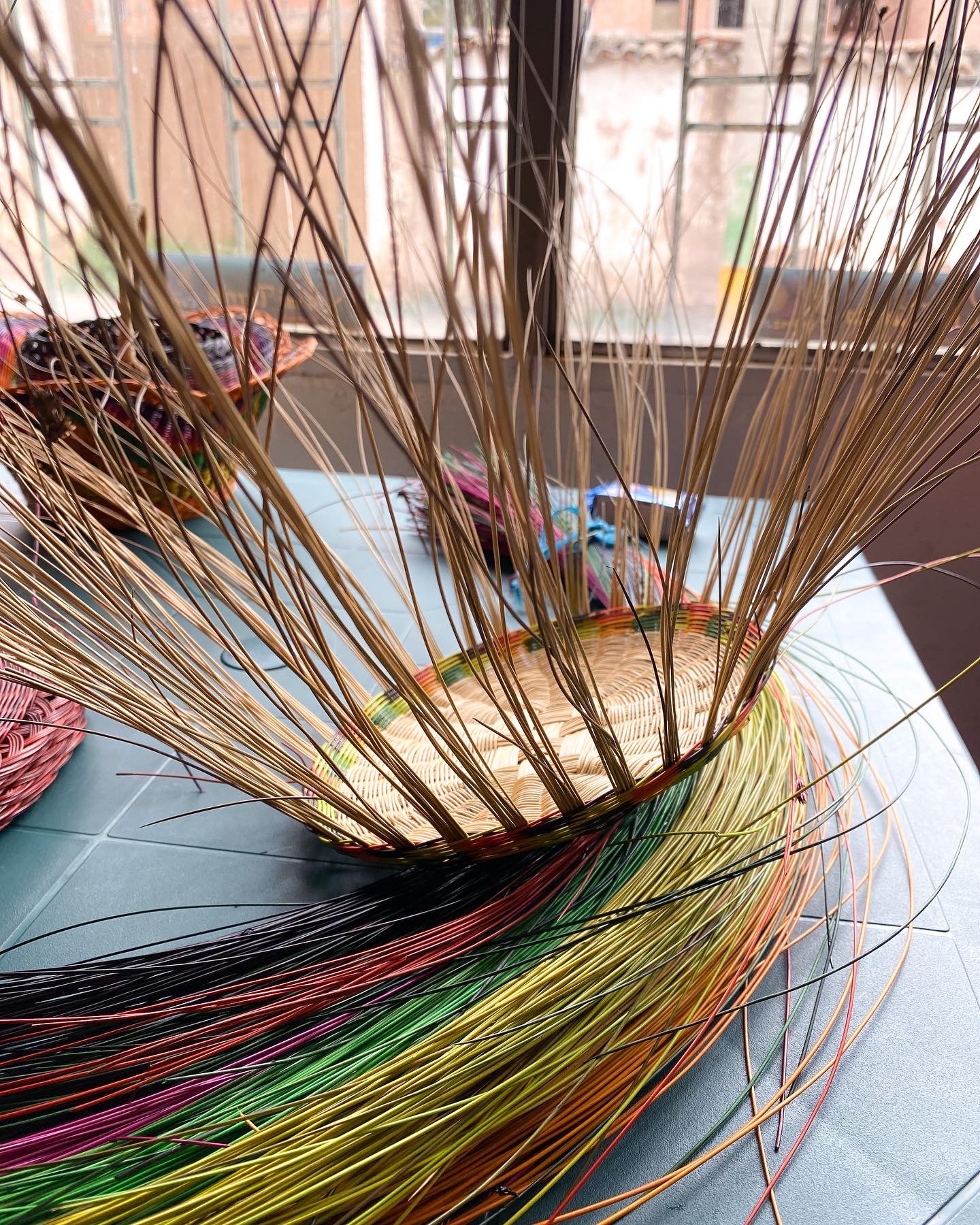Meet the makers | Cerinza, Boyacá
Four hours by car from Bogotá, lies Cerinza, tucked away in the north of the Boyacá region.
In the heart of this sleepy mountain town, is a buzzing small enterprise called the ‘Association of Artisans United in Cerinza’, run by the association’s president Miriam and a small group of women, whose initiative is supported by the government ‘Artesanías de Colombia’ programme.
How the pieces are made:
Each item is made from the esparto palm, which is grown in the cool high-altitude mountainous region nearby. The technical process is very similar to Usiacurí, with a main difference being the palm, which creates a thicker, sturdier finish. Palms are dyed by hand into any colour desired, or left naturally. When dry, they are woven by artisans to create tableware in an array of beautiful designs. Most of the artisans are women, who have learnt the skill in the community, sometimes passing the business through the family.
The dyeing process:
In a cauldron-like vessel over burning log fire, water is heated to boiling temperature and the palm leaves are washed in detergent to remove the grease. The pot is then re-filled and boiled again, adding in the dyes, which are mixed like a science to produce the exact colour the artisan desires.
Once the palm leaves are dyed, they are then hung up to dry on the washing line. This process is all done by hand.
Weaving:
Once the palm is dyed and dried, the artisan then weaves the piece.
Each piece can take days to complete and usually one artisan works on the set in order to maintain continuity with the design, as each one is woven by hand.
Photographs by Freny Green.



